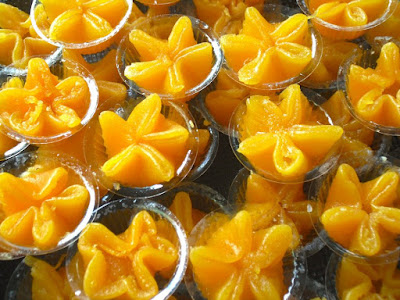History of Koh Kret
Koh Kret is not a natural island, it was formed in 1722.
when a canal was constructed as a shortcut to bypass a bend in the Om Kret branch of the Chao Phraya river. As the canal was widened several times, the section cut off eventually became a separate island. The island continues to serve as a refuge to the Mon tribes who dominated central Thailand between the 6th and 10th centuries and have retained a distinct identity in their version of Buddhism and, particularly at Ko Kret, their pottery.
As the canal was widened a number of times, it eventually cup off a chunk of land, and formed what is today known as Koh Kret (เกาะเกร็ด). If you’re a good swimmer, you might be able to swim to the other side of the river, but it’s still pretty wide.
The story of how Mon people came to settle on Ko Kret is a sad one.
Long after the Mon civilisation of Dvaravati had been incorporated into the Lanna kingdom of what’s now northern Thailand in the 13th century, the Mon stronghold of Hongsavatoi — in what’s now lower Burma — was sacked by a Burman army in 1757. In the brutal genocide that ensued, the invaders killed tens of thousands of Mon people.
Many of those who escaped fled west over the mountains, eventually settling along the Chao Phraya river in Siam, the predecessor to modern Thailand. After such a horrific attack, it’s no surprise that the Mon sought isolated areas like Ko Kret, a flat stretch of land that had been transformed into an island when a canal was dug in 1722 to shorten the route to Ayutthaya.
The Siamese looked favourably on the Mon due to a shared contempt for (and fear of) Burma, but also due to the Mon people’s gentle disposition and earnest dedication to Buddhism. In the early 1800s, the Thai monk/prince who later became King Rama IV was so impressed by the disciplined Mon Buddhist tradition that he used it as a model for the reformed Thammayut order, which remains one of Thailand’s two major Buddhist branches.
Many descendents of the Mon who arrived in the 18th century have since been assimilated into Thai society, but Ko Kret’s community retains much of its traditional Mon character. Even if Thai is now widely used, the Mon language is still spoken here. Mon artistry lives on in the earthen clay bowls displayed at stores and museums, and crafted at workshops throughout the island. It’s still common to see clay pots filled with water outside homes and temples, an ancient Mon custom that offers passersby a quick wash or drink.
Weekending urban Thais flock to Ko Kret’s riverside weekend market to sample the sweets, edible fried flowers, fish cakes, curries and fragrant chilled rice (khao shae) that the Mon are famous for. Though ‘I love Ko Kret’ T-shirts, key chains and cutesy souvenirs are available, the narrow market lanes remain more charming than touristy.
After picking up a few ceramic bowls and sampling the outstanding Mon food, we rented a push bike to explore the island’s outer reaches. In Ko Kret’s southern village, we meandered passed weathered wooden houses, potted plants, napping dogs and residents who flashed us smiles from their porches.
Some houses double as modest cafes and restaurants that cater to the weekend visitors, while others serve as convenience shops for the locals. The outer walls of many are adorned with colourful paint jobs and makeshift works of art. Ko Kret remains a largely self-sufficient community; family businesses contribute everything from motorbike repairs to herbal remedies.
The settlements became thinner and the landscape greener as we pedalled deeper into Ko Kret’s northern reaches. Large swaths of the island’s interior are covered by tropical gardens that mingle with tall grasses and towering palms. Some houses float amid fields of paddy, pandan, taro and cucumber. Others are raised on stilts over miniature ponds used for raising fish and morning glory.
Numerous side paths shoot to quiet riverside perches where we found locals feeding the fish that teem in the Chao Phraya. From the opposite bank, Buddha images gazed back at them.
Cross-river ferries run throughout the day to Ko Kret’s Wat Poramaiyikawas pier from Wat Sanam Nuea, a 10-minute walk or 20 baht motorbike taxi ride from the main Pak Kret pier. The five-minute trip across the river costs two baht. You can also arrange for a boat to take you directly to Ko Kret from the main Pak Kret pier.





Comments
Post a Comment